Lieutenant (A) August Sydney Douglas Macaulay
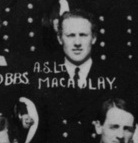
Macaulay at 1 SFTS, Netheravon.
Born in 1917, Acting Sub-Lieutenant (A) Macaulay trained at 20 ERFTS Gravesend on No. 3 Air Course in 1939, and then on No. 3 Course, 1 SFTS Netheravon.
He was awarded with the Distinguished Service Cross and then received two bars to his DSC - gazetted 2nd December 1941 and again on 6th January 1942.
Sub-Lieutenant Maculay took
part in the Battle of Taranto which took place on the night of 11th/12th
November 1940. He was part of the first wave, flying Swordfish L4R
with S/Lt A. Wray.
The Royal Navy launched
the first all-aircraft ship-to-ship naval attack in history, employing
21 Fairey Swordfish biplane torpedo bombers from the aircraft carrier HMS
Illustrious.
The attack struck the battle
fleet of the Regia Marina at anchor in the harbour of Taranto, using aerial
torpedoes despite the shallowness of the water.
The success of this attack
augured the ascendancy of naval aviation over the big guns of battleships.
According to Admiral Cunningham,
"Taranto, and the night
of 11–12 November 1940, should be remembered for ever as having shown once
and for all that in the Fleet Air Arm the Navy has its most devastating
weapon".
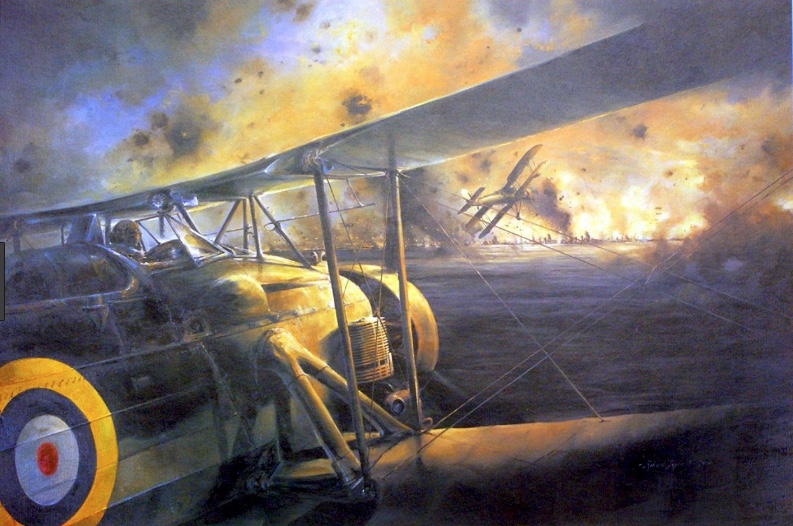
The raid on Taranto as depicted by a Robert Taylor.
On 17th March 1941, flying
a Fairey Swordfish, Macaualy and and his gunner Ken Sim torpedoed and sank
the Regia Marina (Royal Italian Navy) Spica class torpedo boat
Andromeda at Valona, Albania.
The vessel carried a complement of about 100. The ship was was found
in December 2016 by an expedition of Italian divers.
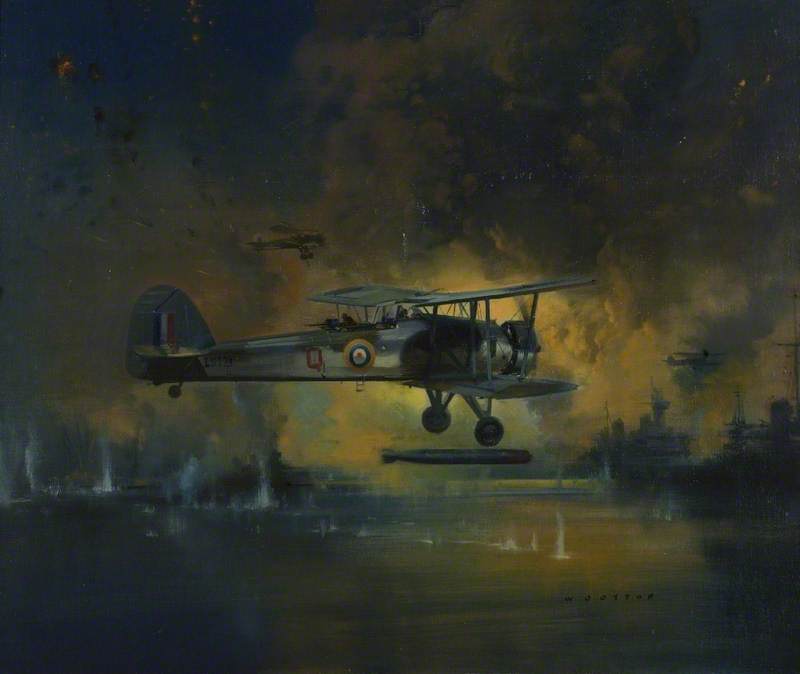
Fairey Swordfishes of 815
Sqn attacking the Italian Fleet, Valona Harbour, Albania 17th March 1941.
Italy declared war on Greece
on 28th October 1940. To assist the Greek forces against the threat,
part of 815 Squadron of the Royal Navy's Fleet Air Arm
was based in the country
for a short period early in 1940, specifically to attack Italian shipping.
On a number of occasions, they raided the Albanian port of Valona,
which the Italians used
as a harbour on the eastern side of the Adriatic. To supplemend the
bombing on shipping by the Wellingtons of No. 37 Sqn, RAF, Admiral Cunningham
sent
six Swordfish torpedo aircraft
of No. 815 Sqn (FAA) to the secret RAF base at Paramythia on 11th March.
Valona harbour was very difficult to approach by night because most of
the water was too shallow for torpedoes.
Nevertheless on 17th March,
the torpedo boat Andromeda and three merchant vessels totalling 12,000
tons were sunk by the Swordfishes in Valona harbour.
The squadron continued to
make attacks from Paramythia until 16th April, after German forces invaded
Albania and Greece, the field became untenable.
During one attack the squadron
CO Lt Cdr J.deF. Jago RN was shot down and taken PoW, Lt F.M.A. Torrens-Spence
DSC RN assumed command
of the squadron and was
subsequently awarded the DSO “for attacks in the Adriatic and in Albania”.
(A tragic postscript to this
story. The Italian hospital ship 'Po' was at anchor in the Bay of
Vlora when the attack three days earlier took place.
The ship was not carrying
standard marking or illuminated, so was considered a fair target, and was
attacked and sunk by five Swordfish.
Twenty-one onboard were
killed including three nurses. Thanks to Tim Brown for this information.)
This painting by Frank Wootton hangs in the Fleet Air Arm Museum, Yeovilton.
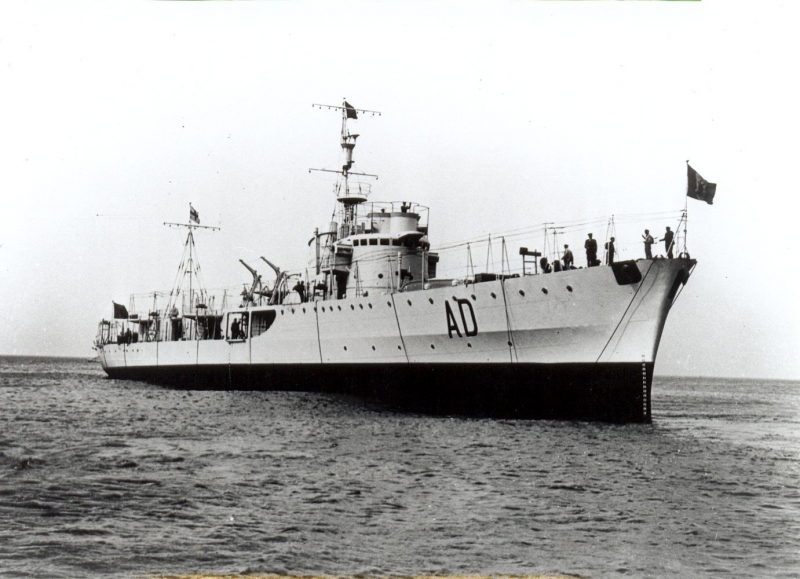
Andromeda, 642 tons.
Lieutenant Macaualy was killed 26th June 1942. His memorial stands at Lee-on-Solent.
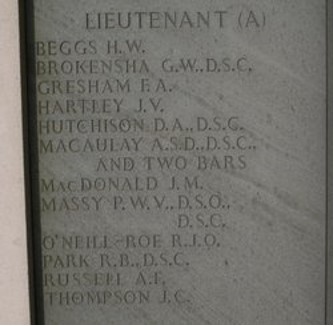
(With grateful thanks to Guiseppe Gaeta for helping with this information. Guiseppe's Uncle Schiavone Matteo was killed aboard Andromeda during the attack on 17th March 1941)